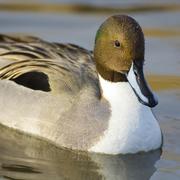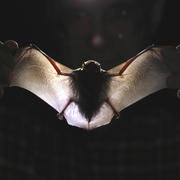National Wildlife Health Center
Home
Welcome to the National Wildlife Health Center! Our mission is to advance wildlife health science for the benefit of animals, humans, and the environment.
Explore Science to learn more about wildlife diseases, ongoing projects, the Honolulu Field Station, and services.
Explore Data and Tools to use WHISPers, wildlife bulletins, our field manual, CWD surveillance app, and more.
Science Spotlight: Rabbit Hemorrhagic Disease Virus 2
Rabbit hemorrhagic disease virus 2 (RHDV2) has been confirmed for the first time in wild rabbits in the United States.
Learn MoreHonolulu Field Station
The NWHC HFS provides support to the natural resource communities of Hawaii and the Pacific Basin in the investigation of wildlife diseases.
Learn MoreNews
Pathology Case of the Month - Eastern Gray Squirrels
Case History: Six eastern gray squirrels (Sciurus carolinensis) were found dead below a tree in a residential yard in Wisconsin, U.S.A.
Pathology Case of the Month - Northern Pintail Duck
Case History: An adult male Northern Pintail Duck (Anas acuta) was found dead on a refuge in Arizona, US. Collectively at this location, 29 birds including Snow Geese (Chen caerulescens), Canada Geese (Branta canadensis), Mallard Ducks (Anas platyrhynchos), and Northern Pintail Ducks (Anas acuta) were found dead with no reported...
Publications
Characterizing patterns of genomic variation in the threatened Utah prairie dog: Implications for conservation and management
Utah prairie dogs (Cynomys parvidens) are federally threatened due to eradication campaigns, habitat destruction, and outbreaks of plague. Today, Utah prairie dogs exist in small, isolated populations, making them less demographically stable and more susceptible to erosion of genetic variation by genetic drift. We characterized patterns of genetic...
Giglio, Rachel M.; Rocke, Tonie E.; Osorio, Jorge E.; Latch, Emily K.Cytology reveals diverse cell morphotypes and cellin-cell interactions in normal collector sea urchins Tripneustes gratilla
Echinoderms such as sea urchins are important in marine ecosystems, particularly as grazers, and unhealthy sea urchins can have important ecological implications. For instance, unexplained mortalities of Diadema antillarum in the Caribbean were followed by algal overgrowth and subsequent collapse of coral reef ecosystems. Unfortunately,...
Work, Thierry M.; Millard, Elena; Mariani, Daniela B.; Weatherby, Tina M.; Rameyer, Robert; Dagenais, Julie; Breeden, Renee; Beale, AllisonImpacts of environmental conditions on fleas in black-tailed prairie dog burrows
Sylvatic plague, caused by the bacterium Yersinia pestis and transmitted by fleas, occurs in prairie dogs of the western United States. Outbreaks can devastate prairie dog communities, often causing nearly 100% mortality. Three competent flea vectors, prairie dog specialists Oropsylla hirsuta and O. tuberculata, and...
Poje, Julia E.; Rocke, Tonie E.; Samuel, Michael D.







